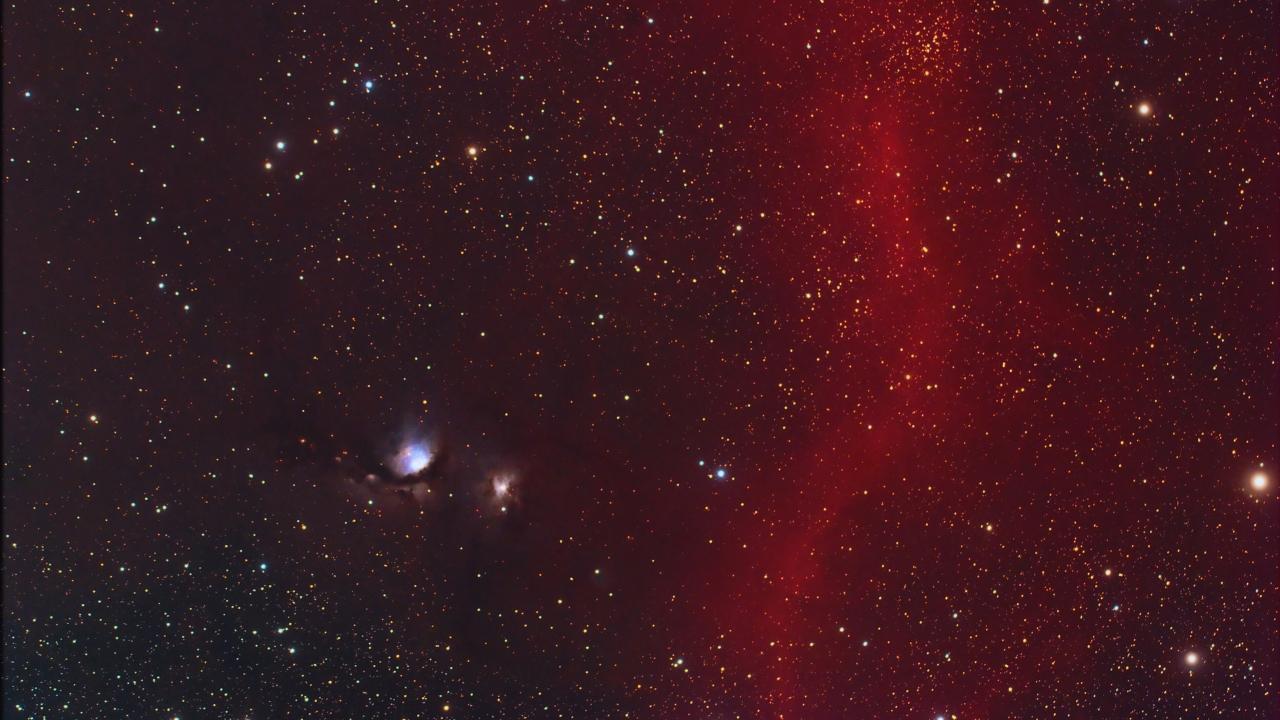
Post by : Anees Nasser
The astronomical community has once again been shaken by groundbreaking news: three rocky exoplanets have been officially confirmed orbiting Barnard’s Star, one of the closest stars to our Solar System. This monumental discovery adds a new dimension to our understanding of planetary systems and fuels the excitement of finding Earth-like worlds beyond our home planet. Barnard’s Star, a red dwarf located approximately 6 light-years away, has long been a subject of intense observation because of its proximity and potential to harbor planets. Now, with this confirmation, the possibilities for scientific exploration have expanded significantly.
Barnard’s Star has been known for centuries, but its small size and faint luminosity made it an enigma for early astronomers. Today, advanced telescopes and refined observation methods have revealed its secrets. The confirmation of these rocky planets indicates that even stars considered less prominent by brightness or size can host complex planetary systems. These findings also suggest that rocky planets could be far more common than we imagined, changing how scientists prioritize future exoplanet searches.
According to the data collected by international observatories and space-based telescopes, all three planets orbit relatively close to Barnard’s Star. This is typical for planets around red dwarfs because the stars emit less heat and light compared to stars like our Sun, meaning habitable zones are much nearer to the star. Each of these planets is classified as terrestrial, which means they have solid surfaces rather than being composed mostly of gas like Jupiter or Saturn. Their rocky composition makes them particularly intriguing for the search for life, as terrestrial planets are the primary candidates for habitability studies.
The first planet, labeled Barnard b, lies near the inner edge of the habitable zone. While its surface may experience extreme conditions compared to Earth, it still falls within the parameters where liquid water could theoretically exist under certain atmospheric conditions. The second planet, Barnard c, appears slightly farther out but might resemble Mars in terms of its temperature and potential geological features. The third, Barnard d, is on the outer edge of the star’s habitable zone, likely colder but not outside the range of interest for astrobiologists.
These findings were made possible through a combination of radial velocity measurements and high-precision imaging. The radial velocity method detects tiny wobbles in a star’s motion caused by the gravitational pull of orbiting planets. This method has been crucial in finding planets around faint stars like Barnard’s Star, which are harder to analyze through transit observations due to their low brightness. Additionally, astronomers utilized advanced instruments such as high-resolution spectrographs mounted on ground-based observatories and data from space telescopes to ensure the accuracy of their conclusions.
The data collection took years of patient observation, and this perseverance paid off with a triple-planetary confirmation. It also demonstrates the effectiveness of collaborative efforts between observatories across different continents, proving that global scientific cooperation continues to drive astronomical breakthroughs.
Perhaps the most captivating aspect of this discovery is the possibility that at least one of these planets might have conditions suitable for life. While there is no direct evidence of atmospheres or water yet, the planets’ rocky nature is promising. Scientists plan to conduct follow-up studies using the James Webb Space Telescope and other next-generation instruments to search for atmospheric signatures such as carbon dioxide, methane, and water vapor, which could indicate habitability or even biological activity.
If any of these worlds exhibit even the faintest signs of habitability, it could revolutionize our understanding of life in the universe. It would suggest that the conditions for life are not unique to Earth and that habitable planets might be common in the cosmos, especially around stars as numerous as red dwarfs.
The confirmation of these planets places Barnard’s Star high on the priority list for future missions. Space agencies and private aerospace companies are already considering possible robotic probes or even conceptual interstellar missions to nearby stars. Though sending a spacecraft to Barnard’s Star with current technology would take tens of thousands of years, emerging concepts like laser-propelled nano-sails could potentially shorten this timeframe dramatically.
In the near term, telescopes will continue to monitor Barnard’s Star, aiming to collect data on the atmospheric composition and surface conditions of these planets. These efforts will not only satisfy scientific curiosity but also help refine our models of planetary formation and evolution in different stellar environments.
The significance of this discovery extends beyond the scientific community. It reignites public fascination with the possibility of other Earth-like worlds and extraterrestrial life. Movies, books, and cultural narratives about interstellar exploration may soon feel less like fiction and more like a realistic glimpse into humanity’s future. In an era where space exploration faces budget constraints and skepticism, such discoveries help reinforce the argument for sustained investment in science and technology.
These rocky planets around Barnard’s Star also add weight to the hypothesis that the Milky Way could be teeming with small, rocky planets orbiting dim stars. Given that red dwarfs are the most common type of star in our galaxy, this could mean that our universe is far more hospitable than previously thought.
The information in this article is based on publicly available scientific data and announcements from research institutions. While every effort has been made to present accurate and verified details, ongoing studies may yield updated findings in the future.










Curry Powers Warriors to Nail-Biting 109-108 Victory Against Spurs
Stephen Curry's 49 points propel the Warriors to a dramatic 109-108 NBA Cup triumph over the Spurs,

India Advances to Semi-Finals After Thrashing USA in Women’s Blind T20 World Cup
India secured a dominant ten-wicket victory over the USA, advancing to the semi-finals in the Women’

South Africa's Early Advantage as India Struggles on Day Two
On Day Two, India reached 138-4 as South Africa took three early wickets, complicating matters with

Kenta Nishimoto Defeats Lakshya Sen in Japan Masters Semifinal
Lakshya Sen's journey in the Japan Masters ends after losing to Kenta Nishimoto 19-21, 21-14, 12-21

Kenta Nishimoto Defeats Lakshya Sen in Japan Masters Semifinals
Lakshya Sen's run at the Japan Masters concludes with a loss to Kenta Nishimoto in the semifinals, 1

Major IPL Trade: Jadeja Joins Royals as CSK Signs Samson
In a significant IPL trade, CSK has acquired Sanju Samson from Rajasthan Royals in exchange for Ravi